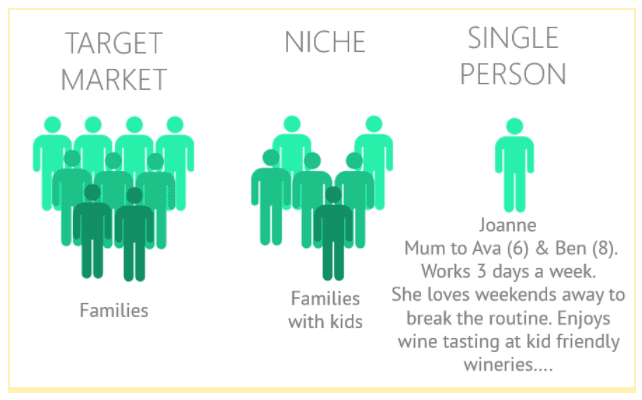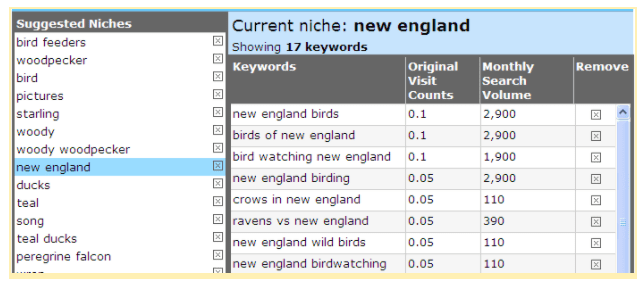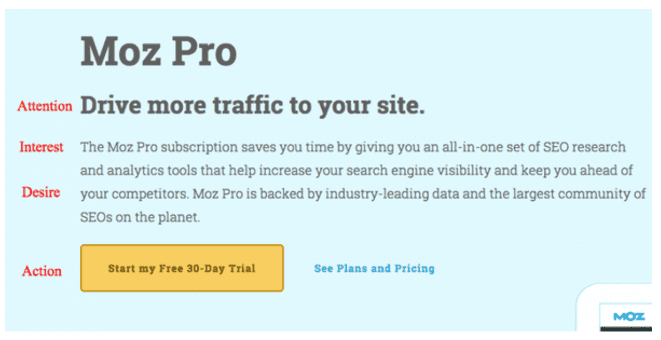Learn how to ensure your content gets discovered
Ever work on a single important article for weeks on end? Maybe you had to interview a number of busy executives or had trouble sourcing good images for the piece? You know how it goes. Anyways, after all of that work, you finally click “publish” and sit back. 24 hours later, you login and see zero likes and zero shares, a crushing defeat. Sound familiar?
Trust me, you’re not alone. Far from it in fact.
Nowadays there are over a billion webpages available to web traffic. Even more shocking, a staggering 2 million articles are published daily.
As you might imagine, standing out can be a bit of a problem.
Unfortunately, there’s no quick fix. But there is an important first step that you’re going to need to take if you want to differentiate yourself from the masses: employing search-friendly copywriting.
It’s easy enough to write a compelling article that sounds great and reads easily. But ensuring that your content is search-friendly? Well that’s another story.
Let's take a look at some of the most important (and easiest ways) you can start taking advantage of this powerful technique.
1. Know Your Target Audience
A good place to start is by truly getting to know your target audience.
Let’s say you think the world needs another Hot Topic (let’s not ask why). Well, you know your audience is going to be “young adults” between the ages of 15-19. You also know that they’re going to listen to alternative and edgy music.
Perhaps most importantly, they’ll be fans of “gothic” fashion. But we’ll need to go even deeper than this if we really want to do our job and do it well.
- What movies does your ideal customer enjoy?
- Where do they get their news?
- What kinds of stories do they care about?
- Who is your customer exactly?
This all looks kind of daunting, I know. I mean, how can you capture the essence of a human being in just a couple sentences? Trust me, it gets easier with practice.
Further, there’s no good way around it. Building an ideal customer profile is a crucial step in making your content search-engine friendly.

If you don’t have a firm grasp of who your audience is, you won’t have any idea what keywords they’re going to be typing in when they click on that search bar.
Speaking of keywords...
2. Set Target Keywords
Now that you have a better idea of who you're targeting, it's time to create a list of your target keywords. Keep in mind these may not stay constant. You’ll want to reevaluate them every so often as the interests of your audience may also grow and change over time.
There are a great number of keyword research tools out there these days, but I still recommends Google Ads Keyword Research Tool.
This tool is one of the most informative and has a bunch of really great customization options. Aside from just getting search volume, this tool also displays a competitive index and suggested alternative keywords for your domain.
I could talk about the basics of Google Ads and keyword research for hours, so instead I’ll recommend you check out our guide on the subject.
Skipping ahead (and assuming you read the guide), you’ve got your list of target keywords. Now we have to make the list a little easier to digest. Start by ranking them in terms of importance.
By importance I mean
- Search volume
- Relevance to your audience
- Absence of site content
Prioritize keywords that drive the most traffic first and then work your way down the list. Seem complicated? Don’t worry too much. This doesn’t have to be an exact formula.
You’re allowed to be subjective here. Just try to be fair with your assessment and give the most weight to search volume.
Next, let’s group related keywords. In our example case, I might group keywords for music apparel, records, toys/figurines, and so on and so forth.

Don’t worry if the keywords all mean the same thing, it’s important to hit close variants individually. It leads to creative writing where you’re repeating the same phrase less, and Google loves natural writing!
3. Examine Trends Using Your Keyword Data
It’s also helpful to get a feel for what trends are popular with your audience at scale.
Using BuzzSumo and Google Trends will be a blessing in this regard, trust me.
Put simply, these tools will be able to show you what kinds of articles are getting a lot of attention (and ranks) for your targeted keywords. It measures this in terms of ranks, social engagements, etc.

By knowing what’s “hot”, you’re in a much better spot to know what angle to take with your writing. Do your readers want a writer with a more casual voice? Maybe they’re into dry technical details? Use these tools to get a better idea of how to answer these questions.
This won’t only give you a leg up when it comes to ranking content in the search results, but it also allows you to really hone your message to fit your audience.
This is search-friendly copywriting at its most basic level: knowing what your audience wants to read, and giving it to them while remaining focused on keywords that get strong search volume.
One other way to determine what's trending is to subscribe to authority sites in your niche.
For the uninitiated, authority sites are the first publications that come to mind when you think of your niche. For instance, say you own a fashion company. Well, the first publications that come to mind for me are Vogue and Glamour.
Can’t say I’m a fan of either. But if that’s what my audience wants, I better get on board, and fast.
These publications will not only be following trends, they’ll be setting them. Keep your eyes closely locked on industry leaders and don’t be shy about “stealing” or mimicking their ideas.
4. Follow A Copywriting Formula
Let’s face it, we’re not all born to be great writers. We can get distracted, be uninspired, you name it.
One way to combat these issues and to ensure you stay focused on writing SEO-optimized content is to use a copywriting formula as your guide. An added benefit? You may even find they help you generate new ideas faster!
From my experience, one of the most effective copywriting formulas is AIDA. It goes like this:
Attention: Get your readers to stop and stare
Interest: Share unique, one-of-a-kind information about your product or service
Desire: Share what makes your product or service different
Action: Get your readers to take action.
Check out this example from Moz’s ad for it’s Pro Plan.

Source: Copyhackers
Remember, readers skim these days. They rarely sit down for the long haul. Hell, odds are you’ve skimmed to this point because it’s right below an image!
In order to get your readers to be open to taking action, you’ll need to get their attention in the first place.
To get you started, I've rounded up a more ways you can use the AIDA formula to boost your copywriting from Forbes and Crazy Egg. Combine strong and search-friendly copy with great page design, and you’ll be amazed by the results!
5. To Link, or Not to Link
The last fundamental to writing SEO optimized copy for your site, is linking.
There are two types of links to consider in both your content and on your pages.
Inbound links
It’s critical that site navigation is easy for your visitors, and that important content is easily accessible. It’d be a waste to spend all of that time planning and executing only to have the resulting masterpiece hiding under a rock.
A good way to reinforce this is to create inbound links within your copy.
This keeps users on your site longer, engaging more with your content, etc. It’s a big win for a number of important reasons.
Luckily, the basic rules are easy to follow. Just do it consistently and with a healthy dose of moderation and you'll be all set.
Outbound links
"Show me your friends, and I'll tell you who you are."
A study by Reboot found that this saying holds some truth in both life and SEO.
The authority and ranking of your site can in no small part be decided by the authority of the sources you associate yourself with.
I think you can see where this is going. By associating your own brand with established authorities on similar subjects, you’re sort of “throwing your lot in with them”, and it’s good to have friends in high places!
Great copy is an art
Creating search-friendly copy is hard, but it’s definitely worth it. You also won’t be great at it your first time around.
No need to worry though, it gets easier! Before you know it, you’ll follow these best practices without even thinking about it.
If you find yourself forgetting some of the more technical elements of this process, you can always refer back here for a refresher.
The basics are the most important part however. Once you’ve applied them to your own site, you’ll be one (very large) step closer to dominating the rankings!
Online copywriting essentials
Learn the essentials of online copywriting that you can apply to content across your whole site. Whether you’re writing product pages, blogs, meta descriptions or social media posts, clear communicating with your target audience is the backbone of online marketing.
Access the Online copywriting essentials quick win
 Thanks to Sam Warren for sharing their advice and opinions in this post. Sam is the marketing manager at RankPay, a top-rated affordable SEO service. Sorry ladies, he’s married and the proud father of a 10lb chihuahua mutt. When Sam’s not writing or growing businesses, he likes to talk about himself in the third person
Thanks to Sam Warren for sharing their advice and opinions in this post. Sam is the marketing manager at RankPay, a top-rated affordable SEO service. Sorry ladies, he’s married and the proud father of a 10lb chihuahua mutt. When Sam’s not writing or growing businesses, he likes to talk about himself in the third person








 Thanks to Sam Warren for sharing their advice and opinions in this post. Sam is the marketing manager at RankPay, a top-rated
Thanks to Sam Warren for sharing their advice and opinions in this post. Sam is the marketing manager at RankPay, a top-rated 


